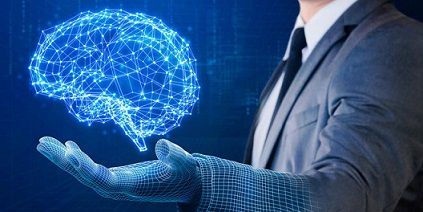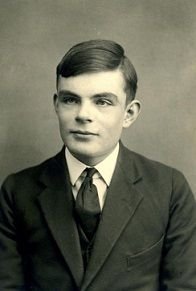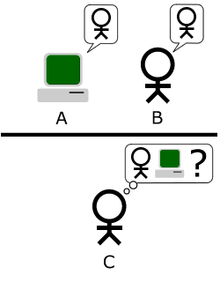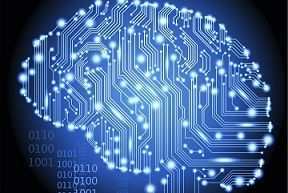Artificial Intelligence: Turing Test

Who was Alan Turing?

Alan Turing was a renowned mathematician, considered one of the fathers of computer science. He was born in Paddington, London on June 23, 1912. Son of Julius Mathison Turing, he spent his childhood in India since his father worked in that country. Turing contributed more formalized concepts of algorithm and computation: The Turing Machine. Alan Turing deciphered the Nazi codes during the Second World War, particularly with those of the Enigma machine and it is considered that his work could have cut this war between 2 and 4 years. For the area of Artificial Intelligence, Alan Turing is recognized by the conception of the Turing test, which is a test designed to test if a machine has the ability to think and behave like a human being. Alan Turing was tried in 1952 after being found guilty of having had sex with a man, considered a very serious crime for that year. Two years after Alan Turing is found dead after ingesting cyanide.
Turing test
The Turing test is a test that was designed by Alan Turing in order to test if a machine has the ability to think and have a similar or indistinguishable behavior to a human being. This test proposed the Imitation Game, which consisted in having 3 people A, B and C, which would be a man (A), a woman (B) and an interrogator (C) regardless of their sex. The interrogator would be in a separate room where he cannot see either of the two participants and could only communicate with them in a common language in which everyone can understand each other. The purpose of the game is for the interrogator to guess who the man is and who the woman is. So that the voices of the participants do not help the interrogator to guess who is who, the players should write their answers, preferably by machine. B’s objective is to help the interrogator so that it can identify the two participants in the correct way and its best strategy could be to tell the truth.
Now we can ask ourselves the following question: What would happen if one of the two participants replaced it with a machine? Would the questioner make a mistake in identifying who is the machine and the human being in the same way he would if the participants were a man and a woman?

The variant of Imitation Game in the Turing test was to change one of the participants (male or female) by a machine. Now the game was to identify who was the machine and who was the human, since the game was not that the machine imitated one of the two sexes because they would have to do both the human and the machine and that is not the main objective and the sense would lose the test and that's where Turing changes knowing the sex to recognize the machine. This test does not consist of cheating because neither of the participants has to pretend to be someone that is not. In addition to this, Turing did not care what methods the machine could use in order to trick the interrogator, such as making mistakes in the answers to a mathematical problem or taking more time than it would take to answer the questions. The important thing is what results from the game and not the methods that can be used to play or the internal mechanisms of reasoning. A machine could pass the Turing test if it succeeds in tricking the interrogator and the interrogator does not recognize it in a significant number of attempts.
Objections from the Turing Test
- The Theological Objection: Most of the objections were based on theological issues, the argument was that to think was only a function of the immortal soul of man, which God has given man and woman but not any animal or machine and that is why animal or machine cannot think. Many positions considered that man was a unique being and that there can be no machine that can be compared with humans.
- The "Heads in the Sand" Objection: "The consequences of machines thinking would be too dreadful. Let us hope and believe that they cannot do so”.
This argument is one of the most affecting when thinking that machines can really think because we like to believe that man is a superior to the rest of creation and think it is better to show that the human being is really superior so we do not have to fear that we may lose our command position.
- The Mathematical Objection: There are several results in mathematical logic that can be used to show that there are limitations to the powers of a discrete-state machine. The best known of these results is Gödel's theorem and shows that in any sufficiently powerful logical system statements can be formulated which can neither be proved nor disproved within the system, unless possibly the system itself is inconsistent. However, Turing states that mistakes and confusions are not free from the human mind, and this diminishes intellectual capacity.
- The Argument from Consciousness: "Not until a machine can write a sonnet or compose a concert because of thoughts and emotions felt, and not by the chance fall of symbols, could we agree that machine equals brain-that is, not only write it but know that it had written it. No mechanism could feel (and not merely artificially signal, and easy contrivance) pleasure at its successes, grief when its valves fuse, be warmed by flattery, be made miserable by its mistakes, be charmed by sex, be angry or depressed when it cannot get what it wants."
This argument is very well expressed in Professor Jefferson’s Lister Oration for 1949. If we take this argument we will note that this is a denial of the validity of the proof. But the only way to know and be sure if the machine thinks is to be the machine and feel its own thought. Turing affirms that if among humans it is correct to ignore solipsism, it should also be done with machines, and since the only way to solve the problem of lack of consciousness is solipsism, it would be better to leave it aside and not consider it in the same way.
- Lady Lovelace’s Objection: "The Analytical Engine has no pretensions to originate anything. It can do whatever we know how to order it to perform. "
This argument of Lady Lovelace considers that machines do not have the capacity to originate something new by their own actions and that they do not have the capacity to surprise us. Turing says that the computer, being a machine, can continually surprise. It cannot be considered as a creative mental process, it could be that creativity is realized in the mind of the observer, and not in the generator.
- Argument from Continuity in the Nervous System: Argues that it is not possible to imitate a continuous system like the human mind (problem of the continuity of the nervous system) with a discrete system (machine). Nevertheless, Turing affirms that it is possible to discretize with sufficient resources any continuous system, so that the difference between one and the other cannot be noticed.
- The Argument from Informality of Behavior: The behavior of people cannot be described with a set of useful rules in any situation that may occur. For example, we could have the rule of not passing the street when the light of the traffic light is red, and passing the street if the light is green; but what happens if by some fault the two lights appear together? Turing affirms that there are differences between rules of conduct and rules of action. If humans had a certain group of rules of conduct which we are going to use for certain situations throughout our lives, we would be machines, but there are no such rules, therefore humans cannot be machines. Turing also states that even if you have a few rules of action in a discrete system, the answers may be different and unexpected in the same way.
At present, although at the moment there has been no success in the Turing test, it happened very recently in London as a tribute to the 60th anniversary of the death of Alan Turing the appearance of a chatbot, that is, a robot that He has conversations with people on the web and it managed to convince more than 30 people that it was a human being. In the same way, this was rejected by the scientists because they are still not sure that it really measures the Turing test, because if a machine has access to a large amount of information it is possible that it can give sensible answers without being intelligent but using tricks to get to that information.

What does the Turing test really measure?
A question that is still being asked, I personally think that the Turing test is nothing more than a test which started a great investigation in which over the years we will know if it is possible that a machine can think like a human. We should not close ourselves to the possibilities, I think that this may be possible despite the objections that Turing presented in his article, because in spite of everything he managed to reverse those objections. As I said, this test was a start for the research and development of this area of computing called Artificial Intelligence.


- Web Site: https://es.wikipedia.org/wiki/Test_de_Turing
- Web Site: https://es.wikipedia.org/wiki/Alan_Turing
- Web Site: http://matap.dmae.upm.es/cienciaficcion/DIVULGACION/3/TestTuring.htm
- Web Site: http://blogs.elpais.com/turing/2012/11/el-test-de-turing-y-la-inteligencia-humana.html
- Web Site: https://www.vix.com/es/btg/curiosidades/6126/que-mide-realmente-el-test-de-turing
- COMPUTING MACHINERY AND INTELLIGENCE. By Alan Turing, 1950.

Really nice.
Thank you!!
Muy interesante este post mi estimado @merlinrosales96. Saludos ; )